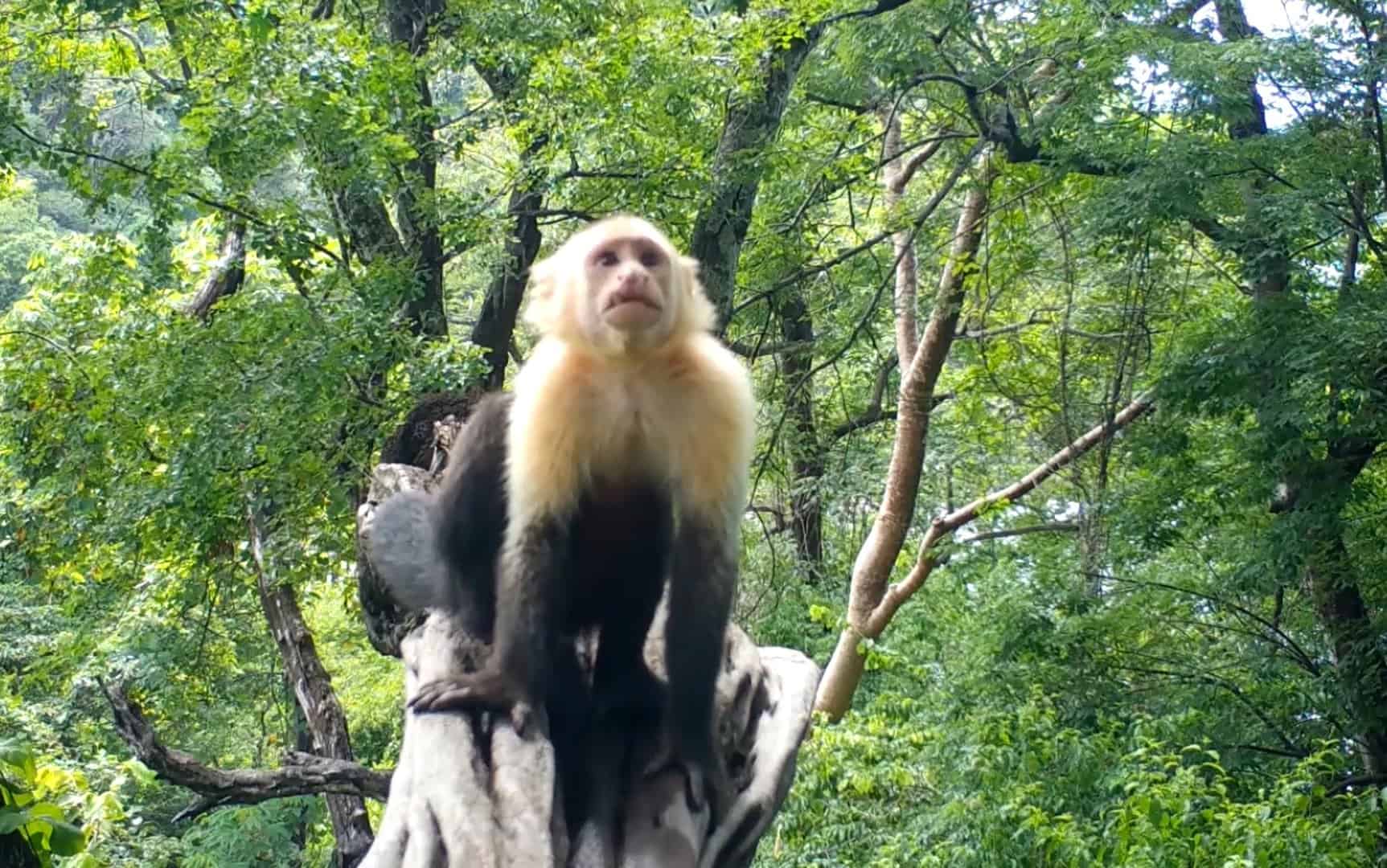White-faced monkeys – they eat everything, so they’re everywhere and they might steal your juice box or throw sticks at you.
White-faced or capuchin monkeys are one of the four species on monkeys that can be found in the forests of Costa Rica. According to a study from biologist Ronald Sánchez of the University of Costa Rica (UCR) (there’s an old tico times article covering this that can found here,)white-faced monkeys have the largest population of the four. Which makes sense because they are extremely adaptable. Part of this adaptability is the ability to feed themselves with an incredible spectrum of food.
From tropical fruits in the crowns of giant trees, to mussels clinging to mangrove roots, to an oriole’s egg stolen from a nest dripping like a teardrop from the tip of a branch, white-faced monkeys can make a meal of just about anything. This ability to find their calories from a wide array of sources allows white-faced monkeys to make their homes in a wide variety of habitats.
This is great news for me and my fellow wildlife observers because we have a solid chance of seeing them in the wild throughout almost the entire country.
Though all white-faced monkeys in Costa Rica belong to the same species (there are different species in South America), I personally divide them into two different groups.
The first group are white-faced monkeys that have been habituated to humans in some way. These monkeys inhabit areas that are substantially impacted by people. Two examples I’ve seen personally are populations of monkeys in Montezuma, Guanacaste and in Manuel Antonio National Park.
The former stole French fries and patacones from the lunch plates of tickled-pink tourists and the latter were splitting a juice box recently heisted from a packed lunch left on a beach blanket on one of the park’s stunning beaches. This group of monkeys doesn’t shy away from people, which is great if you want to observe monkeys, but can become problematic when natural foraging is replaced with stolen lunchbox fodder.
The second group of white-faced monkeys that I’ve come across in my time in the field are monkeys that don’t like you, they don’t like your face, they don’t want you to look at them and yes, they’ll throw sticks at you. These monkeys haven’t been habituated to people. They live in more remote areas and when a person comes crashing through the understory they’re generally upset and they’re happy to share those emotions with you.
When you happen upon them, you will hear them communicating above you – most likely alerting the entire group to your presence. Then, several individuals take the time to come to a branch that has a good view of you. Then they really let you have it. They yell, shake the tree, throw branches and the urine flows freely.
Once they’ve had their time to let you know how they feel, the group moves on. Personally, I’m a fan of the second group. The interaction may be more on the aggressive side, but I like to see wildlife behaving wildly.
As for my camera traps, white-faced monkeys are the species of monkey that I record most frequently because they’re population is so widespread and because they’re unafraid to venture to the forest floor in search of food. Take a look at this video of white-faced monkeys recorded in camera traps in Costa Rica.
About the Author
Vincent Losasso, founder of Guanacaste Wildlife Monitoring, is a biologist who works with camera traps throughout Costa Rica. Learn more about his projects on instagram, facebook or via email: vincent@guanacastewildlifemonitoring.com






